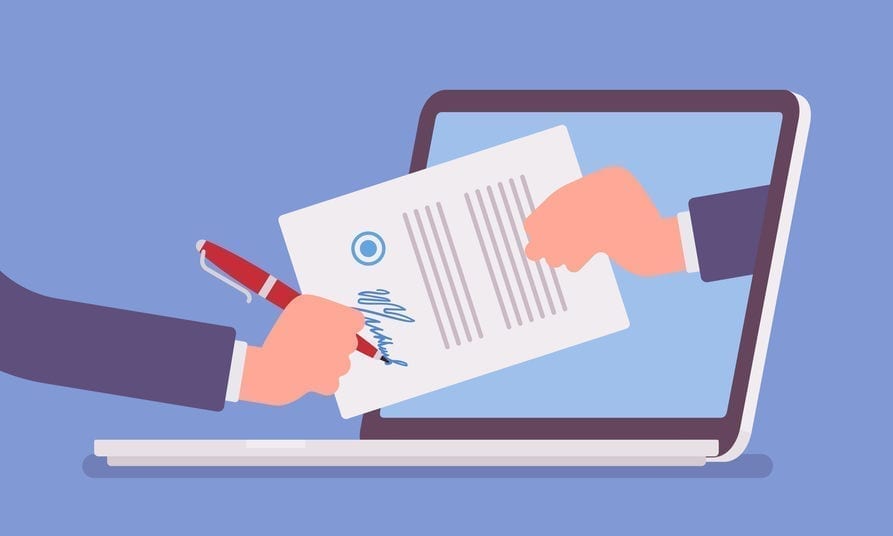Back in the days before the coronavirus, closing on a home purchase in Albuquerque was an affair that included a bunch of people passing pens and paper around the table, exchanging handshakes. Today, that's a scene that evokes a bit of cringing. Times have changed, and so have the way we close on home purchases. Now, lenders use what are called e-closings to navigate social distancing guidelines.
An e-closing doesn't mean that the whole process is done online only. There is still some limited personal interaction. The interesting thing is that this new way of mortgage closing is likely to proceed faster than a traditional mortgage closing, and you’re probably going to be more well-informed about what’s happening each step of the way.
What is an e-closing?
An e-closing is a loan closing where at least one document is signed electronically.
In the past, closing documents were paper and ink. Lately, this has been transitioning to include electronic methods. The most important documents, such as the promissory note, transfer deed and deed of trust or mortgage, are still signed with ink on paper. The less important documents, such as the Closing Disclosure and escrow disclosure, can signed electronically.
Not all e-closings are the same
There are three types of e-closings:
- Hybrid e-closing. The borrowers and notary meet in person, and they sign some documents digitally and they sign some documents traditionally. Most e-closings are of the hybrid type.
- In-person e-notarization, or IPEN. The borrower and notary public meet face to face. All the documents are digital and are signed electronically on a tablet or computer and digitally notarized.
- Remote online notarization, or RON. All documents are signed electronically, and the borrower and notary meet by webcam instead of in person. Not all states, including New Mexico, allow RON, but that list is shrinking, as more states are allowing this provision.
What happens at an e-closing?
Simply put, you sign documents digitally at an e-closing. This may be done by typing your name, or by adding a snapshot of your signature by clicking a mouse or tapping a tablet.
A notary still must confirm your identity. This may be done in person or by an online meeting service. They may as you questions that only you would be able to answer, such as questions about your personal or credit history.
How e-closings benefit mortgage borrowers
The convenience of e-closings is quickly becoming apparent, as it allows borrowers to close from virtually anywhere in the world.
According to a study conducted in 2015 by the Consumer Financial Protection Bureau “to explore whether the use of e-closing technology combined with more time to review closing documents with embedded educational tools can help consumers navigate the closing process”, it was concluded that borrowers understood the closing process better. They got their disclosure documents earlier, giving them more time to review the paperwork.
What mortgage lenders get out of e-closings
Lenders have much less paper to deal with on an e-closing. Plus, they can track electronic documents much more accurately. The process of closing is also faster.
Another benefit is that an electronic document can't be submitted without a signature. That's not the case with paper documents. On a paper document, a missing signature might not be detected immediately, causing headaches and delays.
